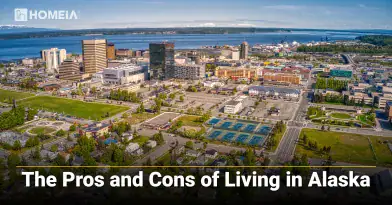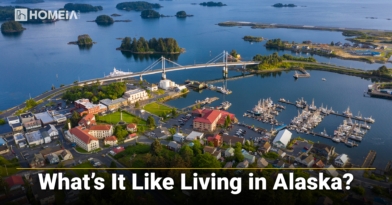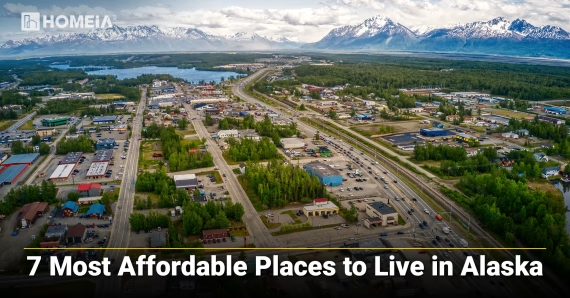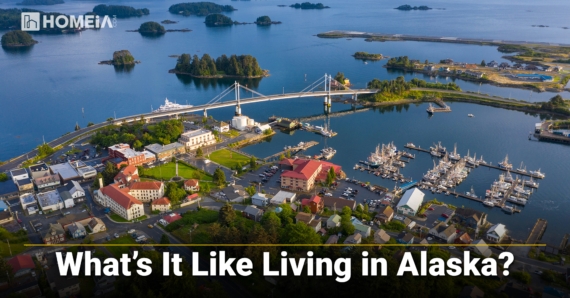Moving to Alaska: The Complete Relocation Guide & Checklist.
- Local Editor:Local Editor: The HOMEiA Team
Published: Oct 24, 2025
- Category: City Living Guide
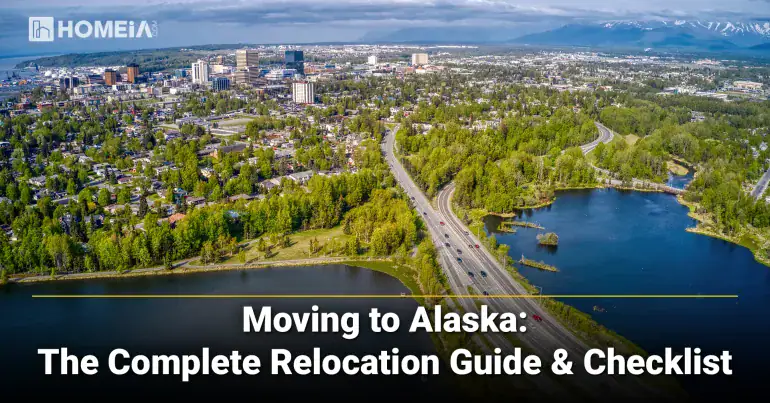
Bordered by Canada and surrounded by the Pacific and Arctic Oceans, Alaska offers a lifestyle defined by breathtaking wilderness, rugged independence, and profound natural beauty. Almost 750,000 residents call The Last Frontier home, drawn to its frontier spirit and modern living. Anchorage provides urban amenities against a backdrop of the Chugach Mountains, while hundreds of smaller communities dot a landscape of glaciers, fjords, and vast tundra.
Known for the Northern Lights, Iditarod sled dog race, and iconic wildlife, this part of the American Northwest gifts more to newcomers—no state income or sales tax, a unique Permanent Fund Dividend, and a culture of self-reliance and adventure. This comprehensive guide covers essential relocation information, from preparing for the climate and understanding costs to navigating the legal requirements of becoming an Alaska resident.
Table of Contents:
- Key Takeaways
- I. Methodology: How We Built This Guide
- 1. What Is It Really Like to Live in Alaska?
- 2. Cost of Living & Affordability
- 3. Jobs & Economy
- 4. Planning Your Move: A Timeline
- 5. Transportation
- 6. Legal Requirements & Paperwork
- 7. Financial Planning
- 8. Insider Tips from Locals
- Frequently Asked Questions About Moving to Alaska
Key Takeaways
- The High Cost of Living: Alaska’s overall cost of living is about 25% above the U.S. average. Housing, groceries, and utilities are significantly more expensive than in most other states, though the lack of state income tax helps offset some costs.
- Extreme Climate Zones: Prepare for a subarctic climate with dramatic seasonal variations. Coastal areas experience milder but wetter conditions, while interior regions face extreme temperature swings from -50°F in winter to 90°F in summer.
- Specialized Economy: Oil and gas, fishing, tourism, and government are the state’s economic pillars, offering stable jobs but often in specific sectors. The market for other professions is limited outside major population centers.
- Frontier Culture: Daily life is infused with a unique blend of Native Alaskan heritage, pioneer spirit, and modern technology, influencing everything from transportation to community events and survival skills.
- Infrastructure Challenges: Safety ratings vary significantly between communities, and many rural areas have limited access to roads, high-speed internet, and specialized healthcare.
The Pros and Cons of Living in Alaska
Alaska is known for glaciers, wilderness, and the Northern Lights, but life here also means high costs, harsh winters, and isolation. This guide breaks down the pros and cons of living in The Last Frontier, plus the best cities for young professionals, families, and retirees. Welcome!…
I. Methodology: How We Built This Guide
Our relocation timeline and recommendations are based on a multi-factor analysis of the key elements that impact a move to Alaska. We compiled data from verified 2025 sources, including the U.S. Census Bureau, Bureau of Labor Statistics, Zillow housing market reports, FBI crime statistics, and Alaska state agencies.
Our evaluation criteria for advice and city selection are weighted as follows:
- Housing & Affordability (30%): Analyzing median home prices, rental costs, and utility averages to provide accurate budgeting advice.
- Access & Logistics (25%): Assessing the practicalities of moving goods and vehicles into the state, considering its remote and challenging geography.
- Legal & Administrative Requirements (20%): Outlining the essential steps for establishing residency, including vehicle registration, driver’s licensing, and voter registration.
- Community & Lifestyle Integration (15%): Providing insights into cultural norms, community events, and tips for building a social network.
- Economic Preparation (10%): Offering guidance on job searching and financial planning specific to the state economy.
1. What Is It Really Like to Live in Alaska?

A. Culture & Lifestyle
Alaska’s culture is a unique tapestry of Native heritage, pioneer spirit, and modern adventure. There’s emphasis on self-reliance, community support, and deep connection to the land and its wildlife. Here, pace of life is generally more deliberate and practical than major urban centers. Community events including Native cultural celebrations, summer solstice festivals, and winter carnivals are cornerstone activities, providing newcomers with natural opportunities to integrate and experience the state’s authentic character.
B. Arts, Sports, and Entertainment
Anchorage and Fairbanks are cultural hubs, boasting museums including the Anchorage Museum and University of Alaska Museum of the North. The cultural scene also includes the Alaska Native Heritage Center, the Iditarod Trail Sled Dog Race, and countless local traditions. For sports, there is a collegiate summer league in the Southeast and D1 college hockey programs. Outdoor sports are a way of life, from hiking and fishing in the summer to skiing and snow machining in the winter. For a look at cultural life in another state, you might explore what it’s like to live in Tennessee.
C. Food Scene & Nightlife
Alaskan cuisine is famously centered around local seafood including salmon, halibut, and king crab. Menus feature dishes including fresh seafood, wild game, and locally foraged berries. While fine dining thrives in Anchorage, nightlife is generally reserved and centered around local breweries, community events, and outdoor gatherings rather than clubbing. Smaller towns will likely have a couple beloved local restaurants that serve as community hubs.
D. Outdoor Recreation & Natural Beauty
Outdoor recreation isn’t just a hobby; it’s a central part of the Alaskan identity.
- National Parks & Monuments: Denali, Glacier Bay, Kenai Fjords, and Wrangell-St. Elias offer unparalleled hiking, wildlife viewing, and sightseeing.
- Fishing & Hunting: World-class salmon runs, halibut fishing, and big game hunting opportunities abound throughout the state.
- Winter Sports: Dog mushing, cross-country skiing, snow machining, and ice fishing provide winter recreation.
- Public Land: Millions of acres of national parks, forests, and wildlife refuges provide endless exploration.
E. Climate
Alaska has several distinct climate zones:
- Southeast (Juneau, Ketchikan): Maritime climate. Mild winters (20°F to 40°F), cool, wet summers (50°F to 65°F). Heavy rainfall.
- Southcentral (Anchorage, Kenai): Subarctic. Frozen, snowy winters (0°F to 30°F), mild summers (55°F to 75°F). Most populous region.
- Interior (Fairbanks, Denali): Continental. Extreme winters (-50°F to 0°F), warm summers (60°F to 90°F). Greatest temperature variation.
- Arctic (Barrow, Prudhoe Bay): Polar. Long, extremely cold winters (-60°F to -20°F), short, cool summers (30°F to 50°F). Permafrost.
What is It Like to Live in Alaska?
If you’re someone from the lower 48 (or anywhere else for that matter), and you’re planning on making the move up to The Last Frontier, here are the top 19 things to know about what it’s really like living in Alaska…
2. Cost of Living & Affordability
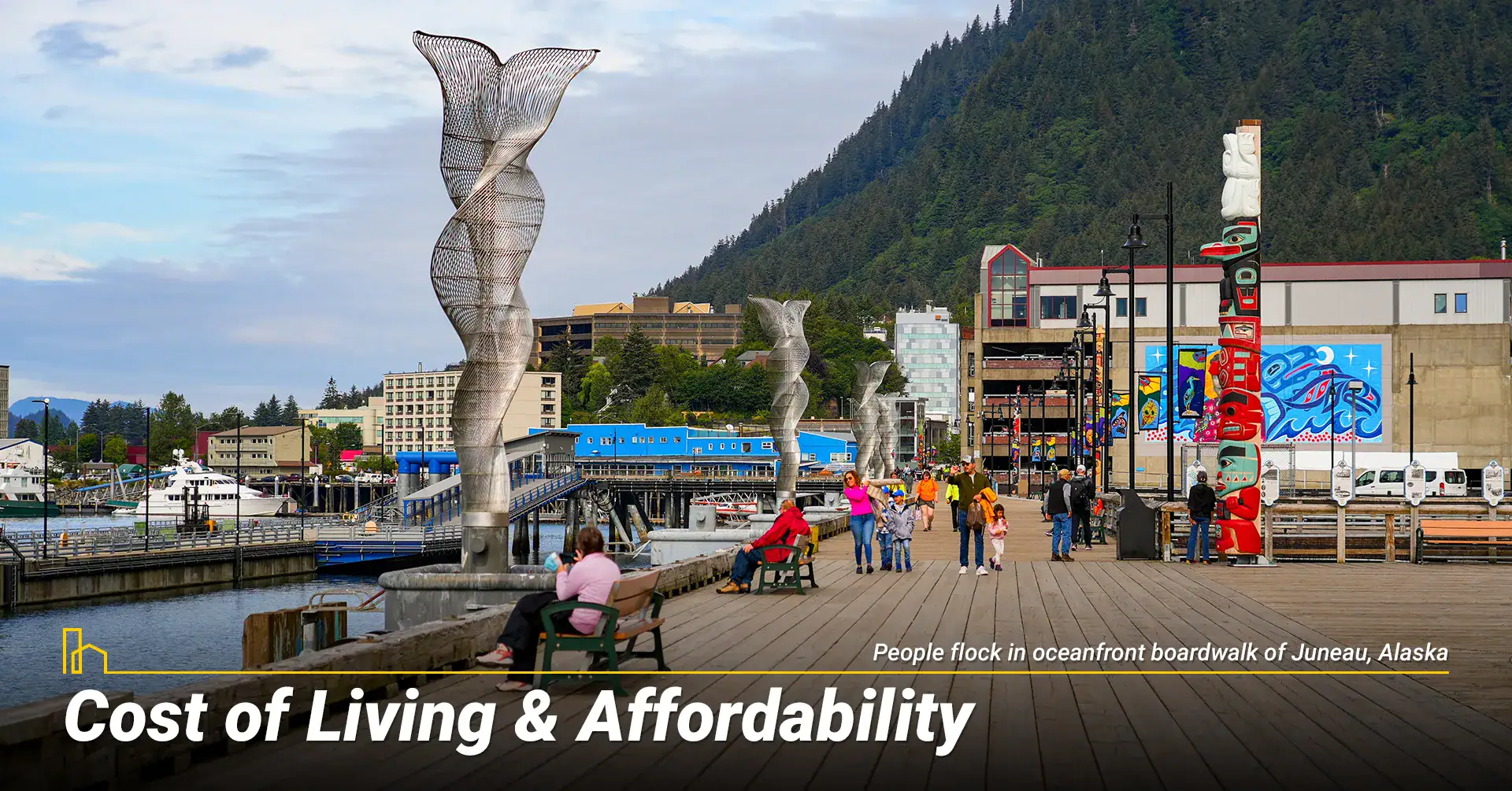
Alaska’s high cost of living is one of its greatest challenges. Let’s break down the costs.
A. Housing Market
Housing costs vary significantly by city and region.
| Housing Type | Anchorage | Fairbanks | Juneau | Wasilla | Kodiak |
|---|---|---|---|---|---|
| Median Home Price | $385,000 | $275,000 | $450,000 | $320,000 | $400,000 |
| Avg. 2-Bedroom Rent | $1,500 | $1,200 | $1,600 | $1,300 | $1,400 |
B. Daily Expenses
| Monthly Expense Category | Average Cost | Notes |
|---|---|---|
| Utilities (Heating Focus) | $250-$500 | Heating costs can be extremely high in winter, especially in interior regions |
| Groceries (Family of 4) | $800-$1,200 | Significantly above national average due to transportation costs |
| Gasoline | ~$3.80/gallon | Prices fluctuate but are often above the U.S. average |
| Internet | $100-$150 | Generally reliable service in cities; can be limited and expensive in rural areas |
3. Jobs & Economy
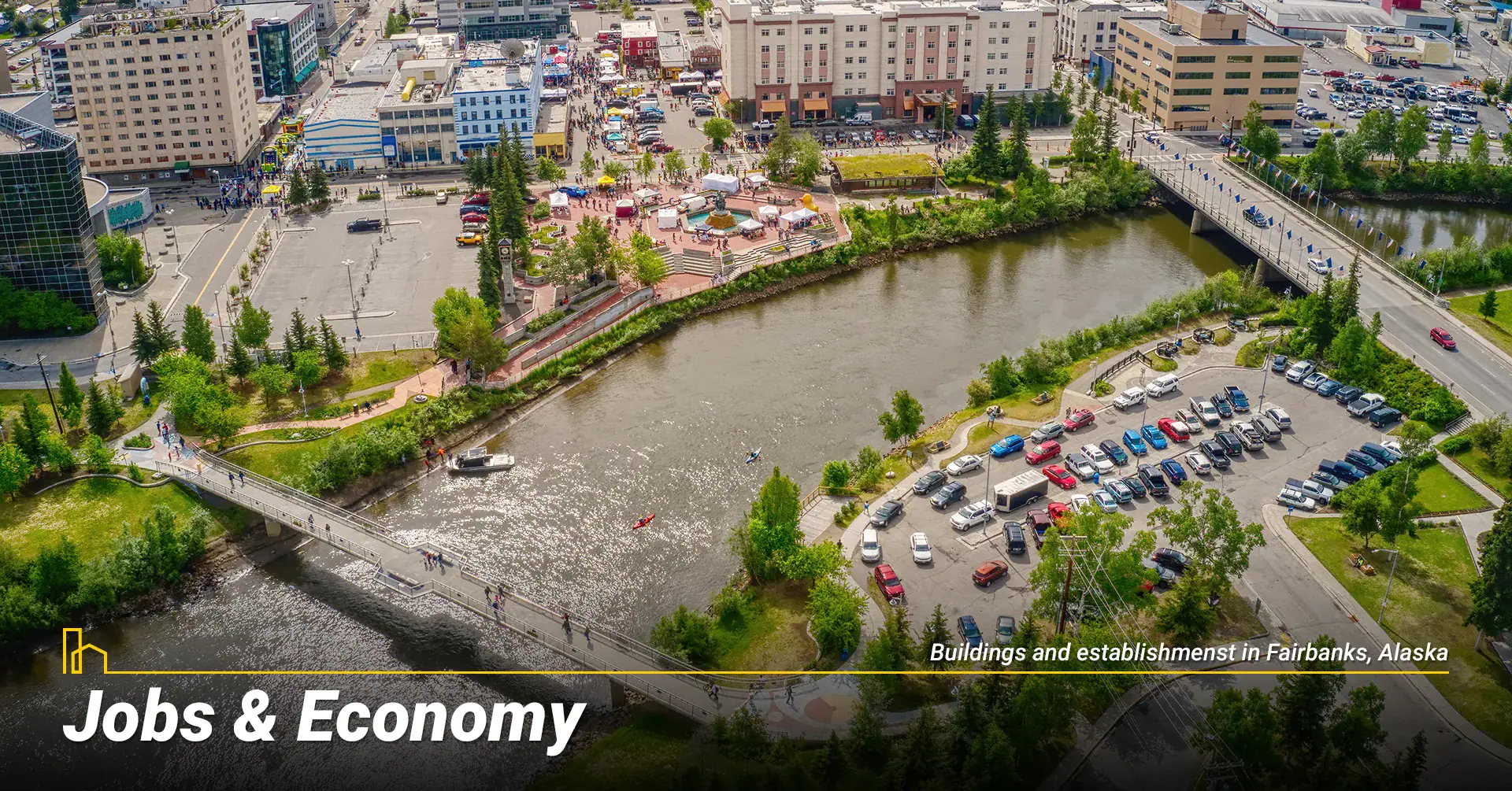
Alaska’s economy is driven by a few key sectors:
- Oil & Gas: The largest industry, providing high-paying jobs and funding state government through the Permanent Fund.
- Government: Federal, state, and local government positions, including military bases.
- Fishing & Seafood: Commercial fishing and processing are major industries, especially in coastal communities.
- Tourism: Growing industry primarily with cruise ships, wildlife viewing, and outdoor adventures.
- Healthcare: Stable and growing sector, especially in population centers.
The 5 Best Places to Live in Alaska: A City Comparison
Alaska blends rugged wilderness with modern innovation, offering diverse lifestyles across its vast landscape. This guide spotlights the five best Alaskan cities to live in 2025, based on affordability, safety, opportunity, and quality of life. From Anchorage’s energy to Sitka’s island beauty, discover where your frontier future begins.
4. Planning Your Move: A Timeline

A successful move to Alaska requires extensive planning, especially if coming from a great distance.
| Timeline | Essential Tasks | Important Details |
|---|---|---|
| 8-12 Weeks Before | Plan & Research | Get moving quotes, create budget, research new state laws, start decluttering |
| 6-8 Weeks Before | Notify & Pack | Give notice to your landlord, collect boxes, pack off-season items, transfer medical files |
| 4-6 Weeks Before | Transfer Services | Schedule utility shutoff/start, file USPS change of address, find new doctors, register kids for school |
| 2-4 Weeks Before | Finalize Details | Finish packing, plan travel route, confirm mover schedule, fill prescriptions |
| 1-2 Weeks Before | Prepare to Go | Pack essentials box, defrost fridge, clean home, confirm utility dates |
| Moving Day | Execute Move | Oversee loading, do final walkthrough, keep documents handy |
| After Arrival | Settle In | Unpack basics first, update license/registration, explore new town |
=> Get the Relocation Guide & Checklist PDF — prepared for both Desktop and Mobile devices.
5. Transportation

- Driving: The Alaska Highway connects to Canada and the Lower 48. Major routes include the Glenn, Parks, and Seward Highways. Many rural communities are not connected by road.
- Flying: Ted Stevens Anchorage International Airport (ANC) is the major hub. Smaller airports in Fairbanks, Juneau, and other communities offer essential connections.
- Marine Highway: The Alaska Marine Highway System supply ferry service to coastal communities not accessible by road.
- Winter Driving: Winter tires are essential from October to April. Carry an extensive emergency kit including survival gear.
The Pros and Cons of Living in Alaska
Alaska is known for glaciers, wilderness, and the Northern Lights, but life here also means high costs, harsh winters, and isolation. This guide breaks down the pros and cons of living in The Last Frontier, plus the best cities for young professionals, families, and retirees. Welcome!…
6. Legal Requirements & Paperwork
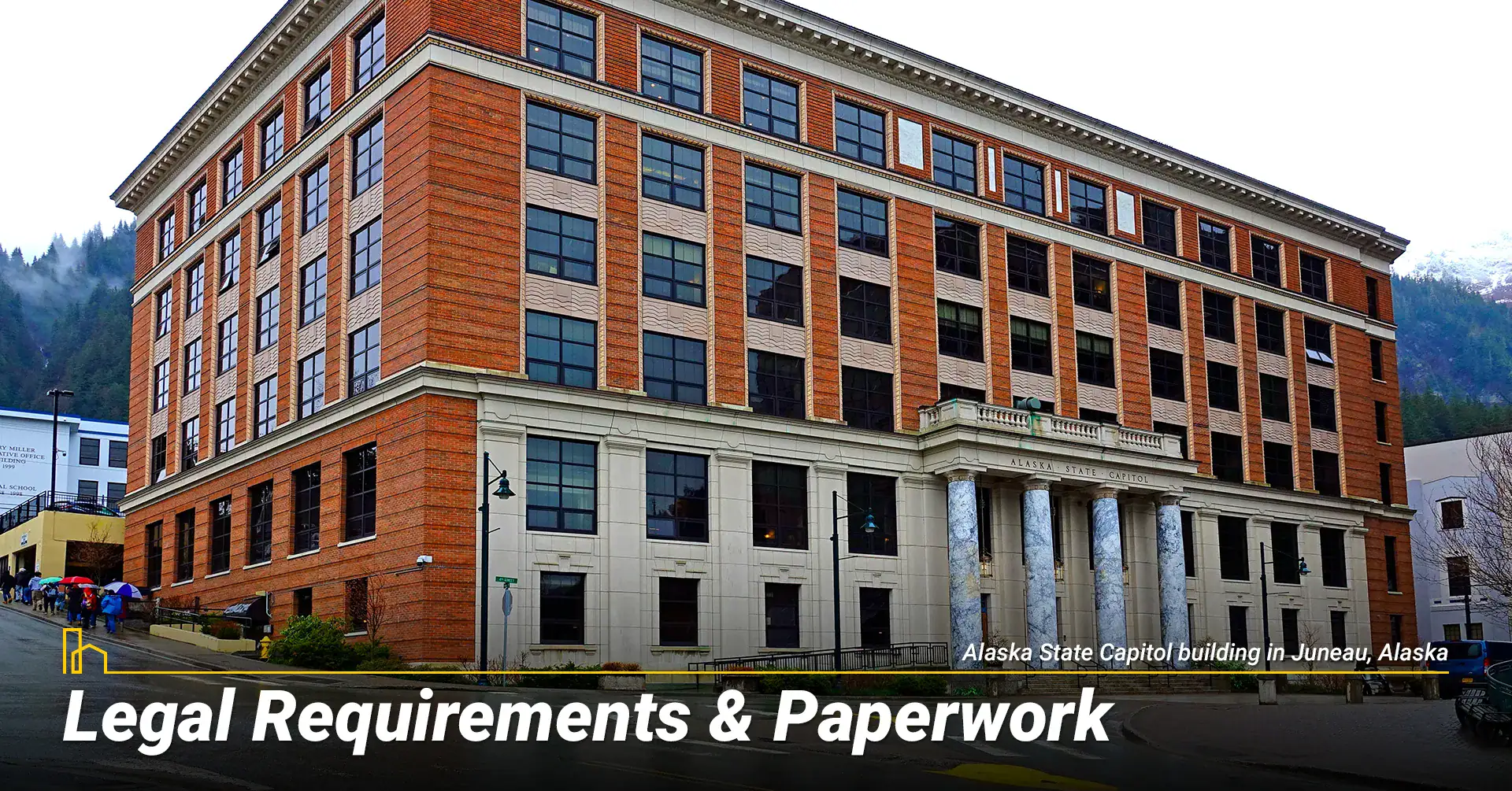
New residents must complete several tasks:
- Vehicle Registration: Required within 30 days of establishing residency. You will need your out-of-state title, proof of in-state insurance, and a VIN inspection.
- Driver’s License: Required within 90 days. You must surrender your previous license. Proof of identity, residency, and Social Security Number are needed.
- Voter Registration: Registering to vote can occur when applying for your driver’s license.
- Other: If you plan to hunt or fish, you will need to purchase a state license. Residents qualify for the Permanent Fund Dividend after one year.
7. Financial Planning

Create a realistic budget accounting for high moving expenses (shipping costs can be substantial). Keep housing expenditures below 30% of your income. Build a healthy emergency fund (6-12 months) due to the state’s economic variability and high costs. Take advantage of the Permanent Fund Dividend and lack of state income tax to offset higher living expenses.
7 Most Affordable Places to Live in Alaska
Despite Alaska’s rugged beauty and higher living costs, several communities offer affordable ways to enjoy the Last Frontier. This guide highlights seven budget-friendly Alaskan towns for 2025, balancing cost, access, and lifestyle. Through data on housing, utilities, and transportation, discover where affordability meets authentic Alaskan living.
8. Insider Tips from Locals

- Prepare for Darkness: Invest in a SAD lamp and vitamin D supplements for the lengthy winter months.
- Learn Winter Driving: Practice driving in snow and ice before winter arrives. Always carry emergency supplies.
- Embrace Layers: Dress in layers year-round. The weather can change rapidly.
- Get Involved: Join community groups, recreational activities, or volunteer to meet people and build support networks.
- Be Self-Sufficient: Learn basic home maintenance, vehicle repair, and emergency preparedness skills.
Conclusion
Moving to Alaska is more than a change of address; it’s an embrace of a different way of life. Doing so demands resilience, preparation, and an appreciation for wilderness and self-reliance. The rewards, however, are immense: unparalleled natural beauty, financial benefits through the Permanent Fund, and the satisfaction of building a life in one of the world’s last great frontiers. With thorough preparation and an adventurous spirit, relocating to The Last Frontier can be the start of a deeply rewarding adventure. For those still considering options, our guide on moving to Colorado might provide an interesting comparison.
Recommended for you
Frequently Asked Questions About Moving to Alaska
1. What is the first step to moving to Alaska?
The absolute first step is to secure a job and housing. While there are financial benefits, the high cost of living and competitive job market make having these secured essential for a smooth transition.
2. Should I drive or ship my car to Alaska?
Driving the Alaska Highway is an adventure many choose, but it requires careful planning and the right vehicle. Shipping a car via barge from Seattle is common and often more practical, though expensive. Consider the costs and timing of both options.
3. How do I get my belongings to Alaska?
For large moves, using a national moving company with Alaska experience or shipping via barge is common. For smaller loads, using air freight or driving with a trailer can be options. Plan well in advance as shipping times can be lengthy.
4. What should I pack vs. buy there?
Bring all essential documents, specialized gear, quality winter clothing, and personal items. Everyday household items, furniture, and bulky goods are better purchased in Alaska to avoid high shipping costs, though prices will be higher.
5. Is it hard to make friends in Alaska?
Generally, no. Alaskans are famously welcoming to newcomers who show respect for the local way of life and willingness to adapt. Join community groups, participate in outdoor activities, volunteer, or take classes to meet people quickly. The shared experience of living in Alaska creates strong community bonds.
If you’re considering other relocation options, you might also explore the pros and cons of living in Tennessee, or the best places to live in Colorado.
Table of Contents:
- Key Takeaways
- I. Methodology: How We Built This Guide
- 1. What Is It Really Like to Live in Alaska?
- 2. Cost of Living & Affordability
- 3. Jobs & Economy
- 4. Planning Your Move: A Timeline
- 5. Transportation
- 6. Legal Requirements & Paperwork
- 7. Financial Planning
- 8. Insider Tips from Locals
- Frequently Asked Questions About Moving to Alaska
HOMEiA is a city guide site where visitors can find detailed information about communities of interest. HOMEiA’s City Guides, created in partnership with local writers and editors, are curated lists of the best, safest, and most affordable places to live. The guides feature the HOMEiA Score, a proprietary index that rates communities on such factors as housing costs, education, employment, etc.
HOMEiA.com aims to be the premier site for people planning to relocate, providing them with insightful content and connecting them with skilled real estate professionals.
We also empower real estate professionals to establish or strengthen their web presence by highlighting their experience, knowledge and achievements. If you’re selected to join our list of certified real estate professionals, you will distinguish yourself from your peers — and earn HOMEiA’s support.
If you believe in HOMEiA’s mission, please share our website with others.
Table of Contents:
- Key Takeaways
- I. Methodology: How We Built This Guide
- 1. What Is It Really Like to Live in Alaska?
- 2. Cost of Living & Affordability
- 3. Jobs & Economy
- 4. Planning Your Move: A Timeline
- 5. Transportation
- 6. Legal Requirements & Paperwork
- 7. Financial Planning
- 8. Insider Tips from Locals
- Frequently Asked Questions About Moving to Alaska

